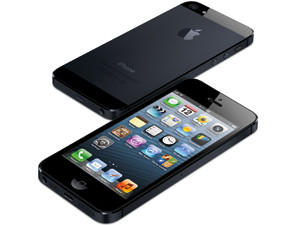
A low-cost version of the iPhone could debut later this year, according to a new report by the Wall Street Journal (WSJ).
While rumours of a low-cost iPhone have been doing the rounds for years, the report cites "people briefed on the matter" as saying Apple has been working on such a device for some time now and it may make it to market in 2013. Apple has declined to comment on the report.
It has been speculated that Apple could be looking to reduce the cost of the handset by using different materials - such as a shell made out of polycarbonate plastic, rather than aluminium or glass.
To date, Apple's strategy in the lower cost phone segment has been to sell older models of the iPhone at discount prices and Apple commentator John Gruber notes: "Perhaps the glass-backed iPhone 4 and 4S (and, come next year, the aluminium-backed iPhone 5) are inherently too expensive to produce to hit certain lower price points."
He suggested it could be because Apple wants to get rid of the last remaining products using those old and irregular 30-pin adapter ports. "But whatever the reason, this would be a significant strategic shift."
The WSJ report claims that Apple now "faces greater pressure to make the iPhone more affordable" as a result of pressure from the growth of lower cost handsets from rival platforms such as Android.
As the global smartphone market has exploded, Apple's total market share has declined. In the third quarter of 2012, Apple had 14.6% of global smartphone shipments - down from 23% in the first quarter of 2012.
However, Gruber points out that Apple's iPhone sales have done nothing but grow since 2007. "What happened is that 'smartphones' were but a sliver over the overall phone market when Apple got started in 2007, and now have reached over 50% of the total phone market.
"So Apple's share of 'smartphones' dropped from 2011 to 2012, because even though iPhone sales continued to grow, they didn't grow as fast as the entire handset industry's shift to smartphones (which shift, was, yes, almost entirely about Android)."
According to the IDC's Worldwide Quarterly Mobile Phone Tracker data, released in December, total smartphone shipments in 2012 are expected to have grown 45.1% year-on-year, to 717.5 million units in total.
IDC forecasts that Android will remain the clear leader in the smartphone race through to 2016, while iOS will maintain its position as the clear number two platform.
"The popularity of the iPhone across multiple markets will drive steady replacements and additional carrier partners will help Apple grow iOS volume. However, the high price point of the iPhone relative to other smartphones will make it cost prohibitive for some users within many emerging markets. In order to maintain current growth rates, Apple will need to examine the possibility of offering less expensive models, similar to its iPod line," says IDC.
Top Smartphone Operating Systems, Forecast Market Share and CAGR, 2012-2016
Smartphone OS | 2012 Market Share | 2016 Market Share | CAGR 2012 - 2016 (%) |
Android | 68.3% | 63.8% | 16.3% |
iOS | 18.8% | 19.1% | 18.8% |
BlackBerry OS | 4.7% | 4.1% | 14.6% |
Windows Phone | 2.6% | 11.4% | 71.3% |
Linux | 2.0% | 1.5% | 10.5% |
Others | 3.6% | 0.1% | -100.0% |
Total | 100.0% | 100.0% | 18.3% |
Share